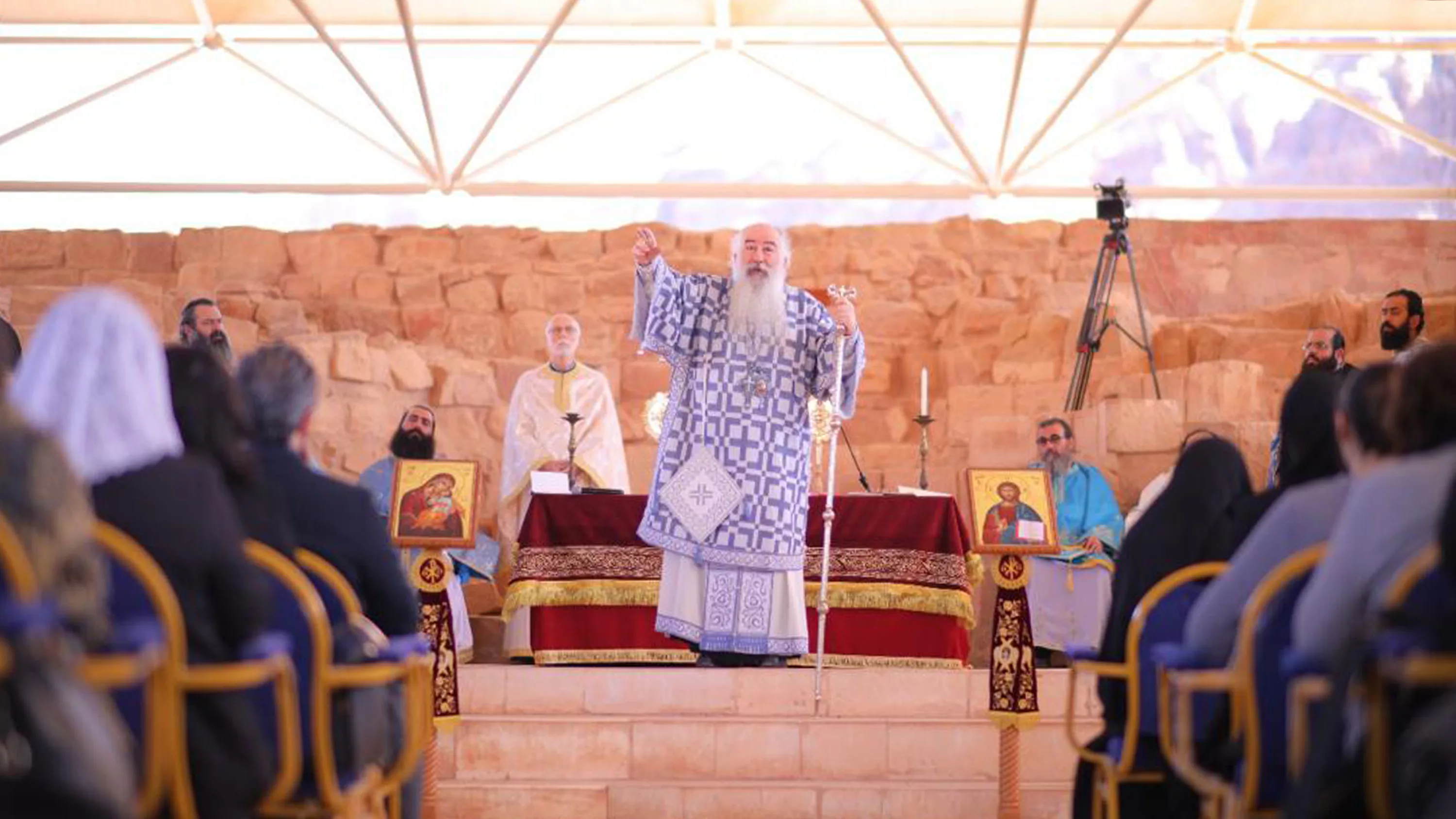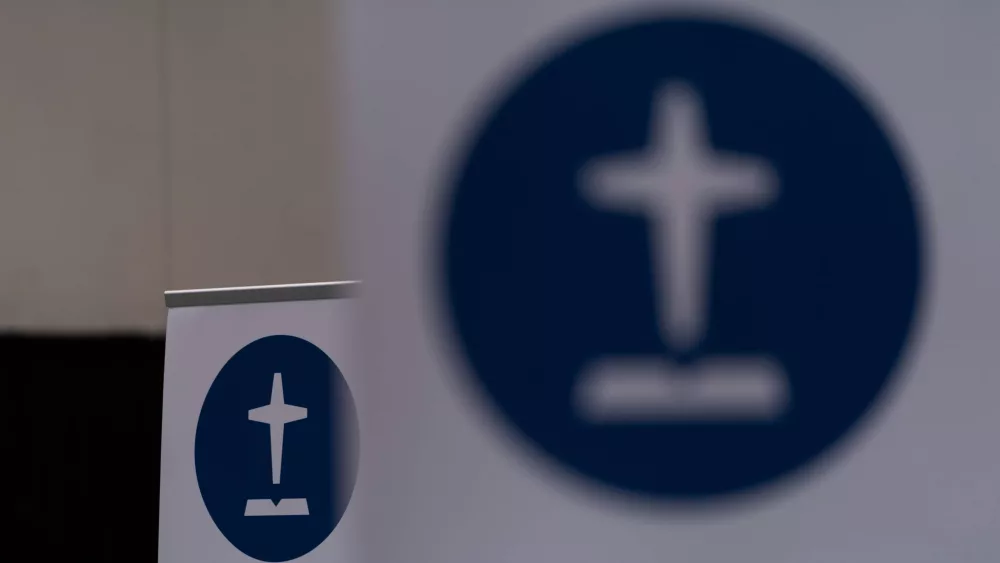
Religious tourism initiative at ancient city recalls Moab, Byzantium, and Arab tribal Christianity, amid speculation on Paul’s possible first missionary journey.
Imagine yourself as Indiana Jones, traversing the narrow, nearly mile-long Siq gorge, with mountain cliffs towering on either side. Turning a corner then reveals the vast expanse of the ancient city of Petra and its majestic Treasury, the first-century rock-carved tomb of an ancient Nabatean king. You pass by the 121-foot-tall structure and its statues of Roman and Egyptian gods, making your way up a steep 800-step ascent to the equally impressive Monastery.
But before reaching Petra’s largest monument, you turn off the path into a different sort of ruin, mosaics lining the floor around half-sized recycled columns as incense wafts through the air. But unlike in the Harrison Ford movie, you do not meet an 11th-century knight preserved by the Holy Grail. Instead, the Greek Orthodox metropolitan of Jordan passes you a cup of Holy Communion.
In January, he offered the first Christian prayers in Petra in 1,400 years.
Other generations of film aficionados may prefer The Mummy Returns, Transformers: Revenge of the Fallen, or even Mortal Kombat: Annihilation. While onsite Hollywood productions provide revenue for Jordan, this is dwarfed by the $5.3 billion the country earns from its tourism industry. In 2022, Petra received 900,000 visitors, nearly one-quarter of the national total.
But now, the Hashemite kingdom is adding a religious component.
“It is a great blessing to be in this holy place in Petra,” said Archbishop Christoforus, before proceeding to offer the bread and wine. “We are not thinking of what surrounds us in stone, but of the saints and spiritual identity in its heritage, history, and civilization—and our great and blessed [Jordanian] homeland.”
In 2021, Jordan launched a five-year national …

